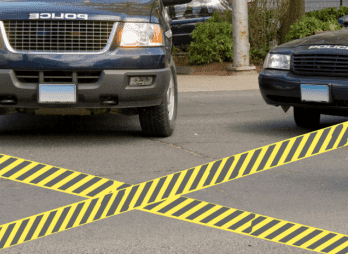If you’ve been paying attention to the news or social media this year, it won’t come as a surprise that American mass violence is at an all-time high. According to data from the Gun Violence Archive, there is a mass shooting — 4 or more people killed, not including the shooter — nine out of every ten days. With this alarmingly high frequency, the government and grassroots organizations have teamed up to fight climbing casualty counts.
Shortly after the shooting at Sandy Hook Elementary School in Newtown, CT, the American College of Surgeons convened a committee in collaboration with representatives from the federal government, medical professionals, medical response organizations, the military, and the FBI. Their goal was to create a survivability-enhancing protocol to guide national policy surrounding active shooter situations and intentional mass casualty events. The committee’s recommendations are summarized in the Hartford Consensus, which you can read in full here.
The Hartford Consensus seeks to “increase citizen survival” and “enhance citizen resilience.” Above all else, the recommendations stress education and training initiatives for the general public, because the average person is often the non-professional “first-responder” on the scene. The report also emphasizes the need for easily-accessible bleeding control kits at workplaces.
The US Department of Homeland Security has gone a step further with its creation of the Stop the Bleed campaign. According to its website, the campaign is a “national awareness campaign and call-to-action” that’s “intended to cultivate grassroots efforts that encourage bystanders to become trained, equipped, and empowered to help in a bleeding emergency before professional help arrives.” As part of the campaign, the DHS offers resources to find and take or host and teach courses on bleeding help.
Basic bleeding control steps outlined by the Hartford Consensus and the Stop the Bleed campaign include an easy-to-remember ABC approach for how to stop severe bleeding:
- Ensure your own safety
- Alert medical professionals — call 911
- Find the Bleeding injury
- Compress — apply pressure to stop the bleeding by:
o Covering the wound with a clean cloth and applying pressure with both hands
o Using a tourniquet (if a bleeding control kit is available)
o Packing the wound with clean cloth or gauze and applying pressure with both hands
Uncontrolled bleeding is the number one cause of preventable death from trauma. While the professionals at LifeSecure understand that the thought of a shooting near your home or workplace is unnerving, knowing the proper bleeding protocol could keep injuries from turning into casualties. It’s also important to remember that unintentional accidents in the workplace also cause trauma and uncontrolled bleeding. To make sure that as many people as possible survive their trauma, consider investing in a bleeding control kit or gunshot would kit, which will better equip you to help stop trauma bleeding.
